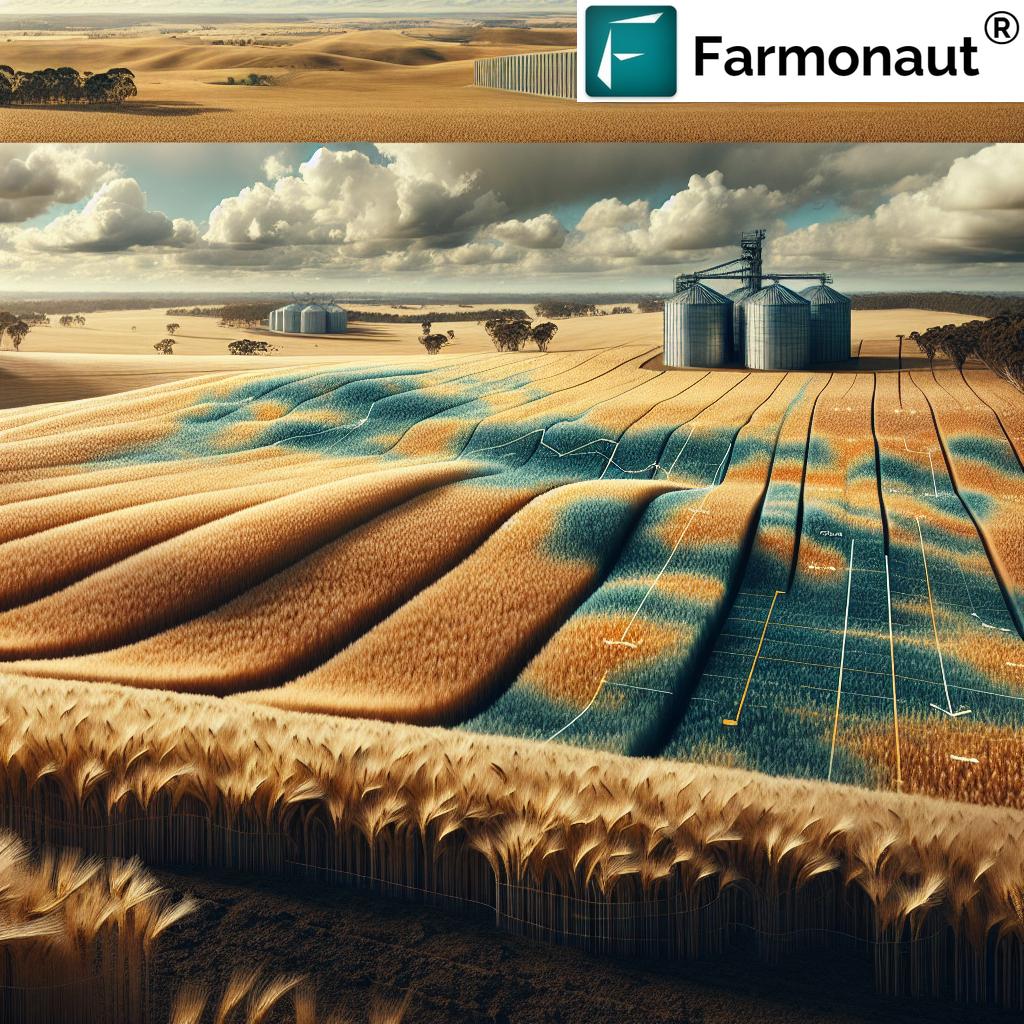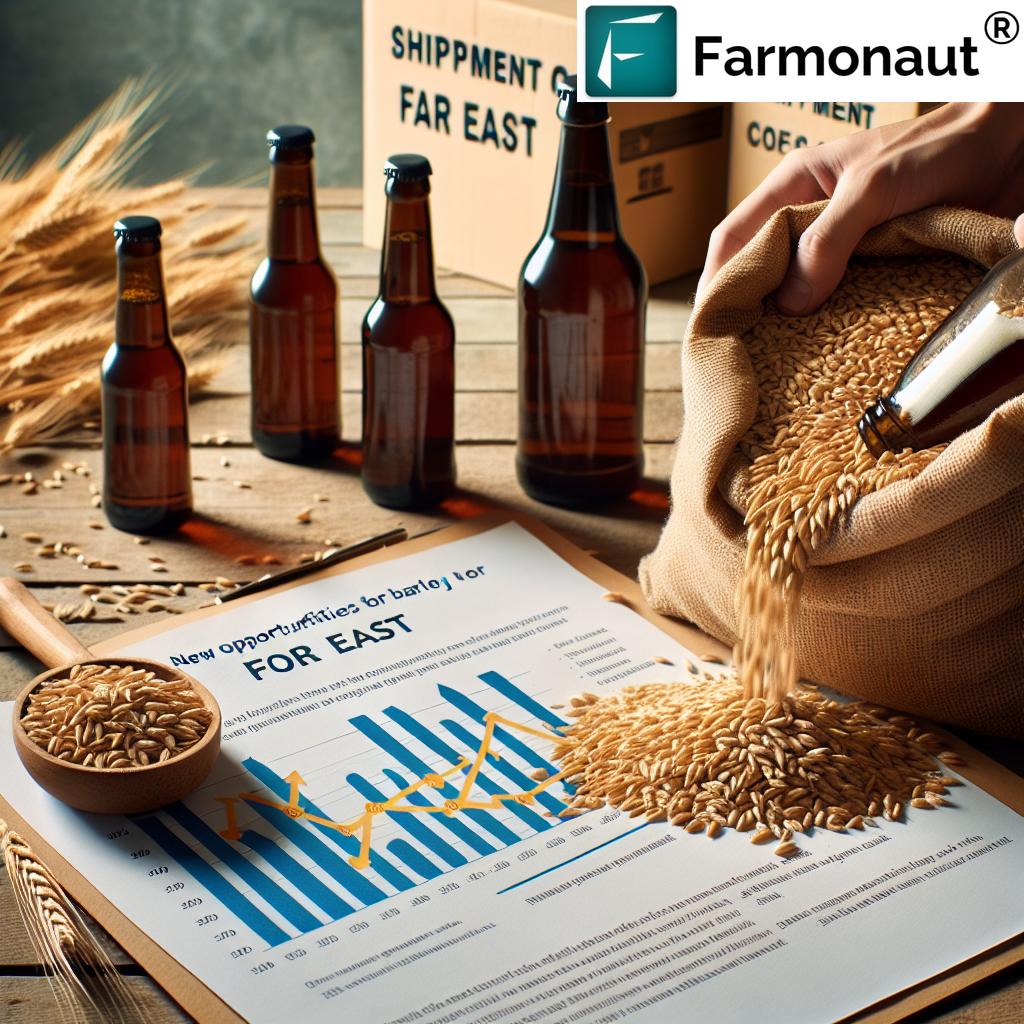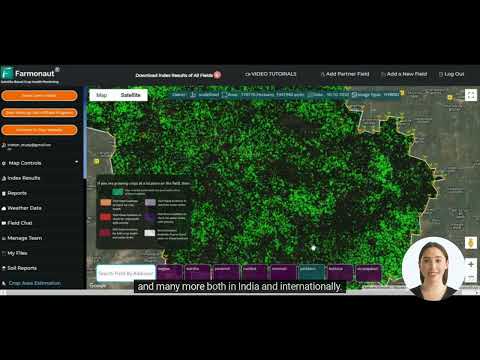Barley Forecasts: Australia’s Shocking 2024 Trends!
Barley forecasts are at the center of some of 2024’s most important agriculture industry conversations. As a foundational cereal grain—vital for beer brewing, animal feed, and multiple food products—barley‘s production trends and forecasts have wide-reaching impacts on farmers, traders, and policymakers navigating complex agricultural markets.
In this article, we will explore the global barley market trends, dissect regional and international barley production forecasts, and analyze the core factors influencing barley yields. By focusing on the 2024/25 season in Australia, we will clarify how climatic conditions, trade policies, and evolving consumer preferences are shaping both the barley industry challenges and its numerous export opportunities.
“Australia’s barley exports are forecasted to surge by 30% in 2024 despite ongoing global market volatility.”
Barley’s Role in Agriculture and Industry
Barley is one of the world’s oldest cultivated cereal grains, having supported food security and crop diversity for thousands of years. Its utility goes far beyond mere food — it’s the critical ingredient powering the $600 billion global beer industry and forms the backbone of animal feed and processed food products worldwide.
For farmers across Europe, North America, Asia, and leading producers such as Australia, barley cultivation offers both opportunities and significant challenges, especially in the face of:
- Increasingly unpredictable weather patterns
- Rapidly changing market demand and consumer trends
- Heightened input costs and reduced profitability
- Shifting trade policies and tariffs
Thus, effective barley forecasting becomes imperative—not just for maximizing crop yields but for empowering smarter decisions across the industry.
Global Barley Production Trends & 2024 Forecasts
Barley cultivation spans continents, with substantial outputs in Europe (notably France and Ukraine), North America (the United States, Canada), extensive areas of Asia (China being a key importer), and of course Australia, which stands as a consistent top-five producer and exporter.
Australia’s 2024/25 Winter Crop: Meteoric Growth Ahead
According to the Australian agriculture ministry, the 2024/25 winter crop season is projected to break records, with barley output surging to 11.6 million metric tons—up from 10 million tons in the previous year.
The growth is driven by:
- Recent summer rains that have enhanced soil moisture and optimistically set the stage for optimal crop establishment
- Shifting climatic conditions that have buffered crops against historic drought patterns
But, as we will see, volatility in barley export markets and fragile trade policies complicate the forecast.
China: Barley Import Dynamics
Over the past year, China’s barley demand has shown signs of resurgence. Between deals sourced from France and Ukraine, imports rebounded to between 360,000 and 1 million tons—marking renewed activity in a market pivotal to global barley trade.
Global Market Patterns
- Europe remains the world’s top barley-producing continent, with extensive exports heading towards Asia and the Middle East.
- North America faces unique challenges; while Canada continues steady output, the United States faces declining beer consumption and hence dips in barley production.
- Asia—particularly China—serves as a fulcrum, with rapidly changing import demand influencing global price swings and trade flows.
In summary, barley production forecasts in 2024 are uniquely shaped by local weather events, international trade policies, and volatile global demand—presenting both risk and reward, especially for Australian farmers and exporters.
Comparative Forecast Table: Australia & Global Barley Production (2022-2024F)
| Year | Australia: Estimated Production (Million Tonnes) | Global Average: Estimated Production (Million Tonnes) | Major Export Markets | Climatic/Trade Impact Indicators |
|---|---|---|---|---|
| 2022 | 13.5 | 145 | China, Japan, Saudi Arabia, Indonesia | Above-average rainfall; trade tensions easing |
| 2023 | 10.0 | 142 | China, Middle East, Southeast Asia | Dry weather in east Australia; moderate tariffs |
| 2024F | 11.6 | 146 | China, India, Japan, Saudi Arabia | Favorable summer rains; rising tariffs in North America |
Want to make more informed crop production decisions?
Try Farmonaut’s Satellite-Based Crop Health Monitoring—accessible via 
 or
or  .
.
How Farmonaut’s Satellite Technology is Revolutionizing Land Use in Agriculture
Factors Influencing Barley Forecasts & Yields
The reliability of barley production forecasts depends on monitoring, understanding, and reacting to a variety of factors influencing barley yields. Whether you’re a farmer, exporter, or analyst, grasping these elements is crucial for accurate planning.
1. Climatic Conditions Affecting Barley
The most variable and high-impact aspect of barley cultivation remains weather. For instance:
- In Australia, summer rains have improved soil moisture, raising yield potential for the 2024/25 winter crop season.
- However, ongoing climatic shifts may still pose risks, as unpredictable patterns can quickly change output.
2. Market Demand & Consumer Preferences
Changes in global barley demand significantly impact prices and planting decisions:
- The decline of beer consumption (notably in the United States, where levels are at their lowest in 40 years) is shifting the demand for beer ingredient barley.
- Alternative beverages like hard seltzers and canned cocktails further amplify this reduction in barley’s traditional markets.
3. Trade Policies, Tariffs & Barley Export Opportunities
Policies can rapidly pivot the entire industry:
- The impact of tariffs on barley trade was felt keenly when Canada imposed tariffs on U.S. barley, affecting export patterns and profitability.
- China remains a critical variable, with policy relaxation or tightening causing wild swings in barley demand.
4. Technological Advancements
Ongoing research, innovation, and real-time monitoring redefine forecasting:
- New drought-resistant varieties and remote-sensing (such as Farmonaut’s offerings) enhance barley yields.
- Data-driven systems help farmers optimize inputs and respond quickly to changing conditions.
- AI-driven advisory tools can predict disease/pest outbreaks and recommend precise interventions.
5. Input Costs & Resource Constraints
- Rising fertilizer and chemical costs, often due to tariffs, squeeze profit margins for barley farmers.
- Heightened packaging and transportation costs also impact the viability of barley export.
To address the complexity of barley supply chain management and boost global market trust, don’t miss Farmonaut Product Traceability—blockchain-powered transparency for every step from farm to end user.
Key Barley Industry Challenges in 2024
While Australia and some other key regions are enjoying bumper barley production forecasts, the global barley industry is not without significant roadblocks. Let’s break down the most pressing barley industry challenges impacting both established and emerging producers.
- Declining Beer Consumption: The persistent drop in beer demand—especially in traditional beer-loving regions (United States and some parts of Europe)—means less barley is required. This has pushed some farmers to face unsold or devalued harvests.
- Global Trade Barriers: Tariffs and retaliatory measures, such as those recently enacted by Canada against U.S. barley exports, threaten exporters’ market access and create uncertainty for farmers.
- Volatile Input Costs: Tariff-driven rises in fertilizer, crop chemicals, or even packaging materials escalate the “costs of doing business” and strain already-thin profit margins.
- Climatic Volatility: While good seasons (like Australia’s current “lucky rains”) boost yields, unpredictable weather remains the industry’s Achilles’ heel—just one drought can devastate supply.
- Market Oversupply: With diminishing consumption and static production in some regions, excess supply can further push prices downward, triggering a potential feedback loop of declining farm income.
Integrate real-time, area-scaled crop data into your operations using the Farmonaut API and extensive API Developer Docs.
Opportunities in the Barley Industry: Unlocking Barley Export Opportunities
For all the challenges, ongoing growth and market opportunities in the barley industry remain abundant—especially for regions and farmers willing to diversify, innovate, and globalize.
- Diversification: As beer ingredient barley demand dips, farmers can pivot toward food-grade barley, malting barley for craft breweries, or even value-added animal feed products. This reduces dependency on a single market and opens up lucrative premium channels.
- Barley Export Opportunities—China & Beyond: China’s barley demand remains enormous, recently purchasing hundreds of thousands of tons from European and Oceanic producers. Meanwhile, new trade relationships with India, the Middle East, and North Africa are developing for Australian and Canadian exporters.
- Technological Advancements: From AI-based crop health monitoring to climate-adaptive seeds and resource optimization tools, next-generation solutions (e.g., Farmonaut) can help farmers weather shifts, raise yields, and lower risks.
Explore Farmonaut’s Advanced Crop Monitoring & Yield Prediction
Farmonaut For Crop Area Estimation
For large-scale farm businesses, Farmonaut’s Large-Scale Farm Management Tools deliver powerful administration, fleet/resource management, and productivity analytics—making it easy to track barley crop health and optimize seasonal decisions at scale.
“Unusual climatic shifts in 2024 may reduce Australia’s barley yield by up to 15% compared to last year’s harvest.”
Farmonaut: Empowering Modern Barley Farming & Industry Decision-Making
As the barley industry faces the dual realities of abundant opportunities and intensifying challenges, Farmonaut leads the way in delivering actionable, cost-effective technological advancements that drive better forecasts and yields.
Here’s how Farmonaut addresses core industry concerns:
-
Satellite-Based Crop Health Monitoring:
Real-time NDVI, soil moisture, and crop health analytics let farmers identify stress and respond before problems escalate. This directly improves barley yields even amidst erratic climatic conditions. -
AI Advisory System (“Jeevn”):
Personalized, dynamic recommendations for pest management, irrigation, fertilizer application, and disease mitigation—driving smarter decisions and boosting potential output per hectare. -
Blockchain Traceability:
By leveraging blockchain-based traceability, exporters can guarantee origin authenticity, meet stringent import standards, and reduce fraud risk in international barley grain deals. -
Fleet and Resource Management:
Farmonaut provides sophisticated fleet management that controls logistical costs and delivers savings through optimized farm machinery deployment and maintenance—a critical factor as input costs soar. -
Carbon Footprinting:
For those selling in high-standard “green” markets, Farmonaut’s carbon footprinting dashboards track emissions and improve farm sustainability in line with both consumer and regulatory expectations. -
Financing & Insurance:
Farmonaut’s satellite-based verification systems streamline crop loan/insurance approvals, increasing financial access for barley farmers while reducing lender and insurer risk.
Why is this critical? With output volatility, shrinking margins, and competitive global markets, timely, precise data and modern farm management are non-negotiable for tomorrow’s barley producers.
Farmonaut | Making Farming Better With Satellite Data
Future Outlook: Barley Forecasts, Industry Trends, and Policy Implications
What does the future hold for barley in Australia, China, and the global markets? Based on 2024 forecasts and recent trends:
- Volatility will only increase as weather patterns change, trade wars simmer, and consumer preferences become more complex.
- Technological adoption separates leading farmers and exporters from those left behind by rapidly evolving marketplace demands.
- Policymakers must prioritize investment in data infrastructure, insurance schemes, and sustainable practices to buffer stakeholders against shocks—whether they are caused by drought, tariffs, or erratic global demand.
Globally, the next five years look set to cement Australia as a dominant player in the barley export scene, even as partners like China and the United States realign supply chains in a world increasingly ruled by technology and policy uncertainty.
For farmers, agencies, and agribusinesses, investing in modern forecasting and resource management solutions (like Farmonaut) will determine not just survival, but success in tomorrow’s barley economy.
Farmonaut Subscription Plans
Farmonaut offers flexible, scalable subscription packages for every farm size and use case:
Whether you’re an individual barley farmer, an agribusiness, or a government agency, you can optimize every step—crop health, resource allocation, risk management, and compliance—affordably and efficiently.
Check current plans and get started:
Frequently Asked Questions: Barley Forecasts & Industry Trends
What are the key factors influencing barley forecasts in Australia?
The most influential factors are climatic conditions (especially rainfall and soil moisture), shifting global market demand (notably from China), and trade policy changes such as tariffs imposed by Canada or other trading partners.
Why is barley important for global agriculture and industry?
Barley is crucial both as an animal feed and as the primary ingredient in beer production. It supports food security, enables value-added exports, and provides farmer income stability, especially in Australia, Europe, and North America.
How do shifting consumer preferences affect barley markets?
With the rise of alternative alcoholic beverages (like hard seltzers), beer consumption has declined, directly reducing demand for barley. This forces farmers to focus on new outlet channels, like food-grade barley, malting for craft brewers, or non-beverage uses.
What technological advancements are shaping barley forecasting?
Modern satellite-based monitoring, AI advisory (Jeevn), and blockchain traceability solutions (all offered by Farmonaut) now give farmers and traders unparalleled data to optimize yields, resource use, and supply chain transparency—making forecasts more accurate than ever before.
How does Farmonaut make precision agriculture affordable for barley producers?
By leveraging satellite imagery, AI, and accessible web/mobile tools, Farmonaut eliminates the need for expensive hardware, bringing precision farming (get started here) to smallholders and massive operations alike.
Conclusion: Navigating Barley’s Uncertain Future
At every level—from the Australian winter crop season to the shifting tides of China’s barley imports—the future of barley production forecasts is inextricably tied to climatic, economic, technological, and policy shifts.
As our analysis shows, those who harness data-driven decision-making, stay agile in the face of volatility, and invest in globally recognized technology platforms like Farmonaut will transform challenges into winning opportunities—feeding markets, innovating products, and ensuring profitability even in unpredictable times.
Now, more than ever, barley farmers, traders, and policymakers must engage with real-time information, agile management, and global best practices to secure the future of this vital grain.



















